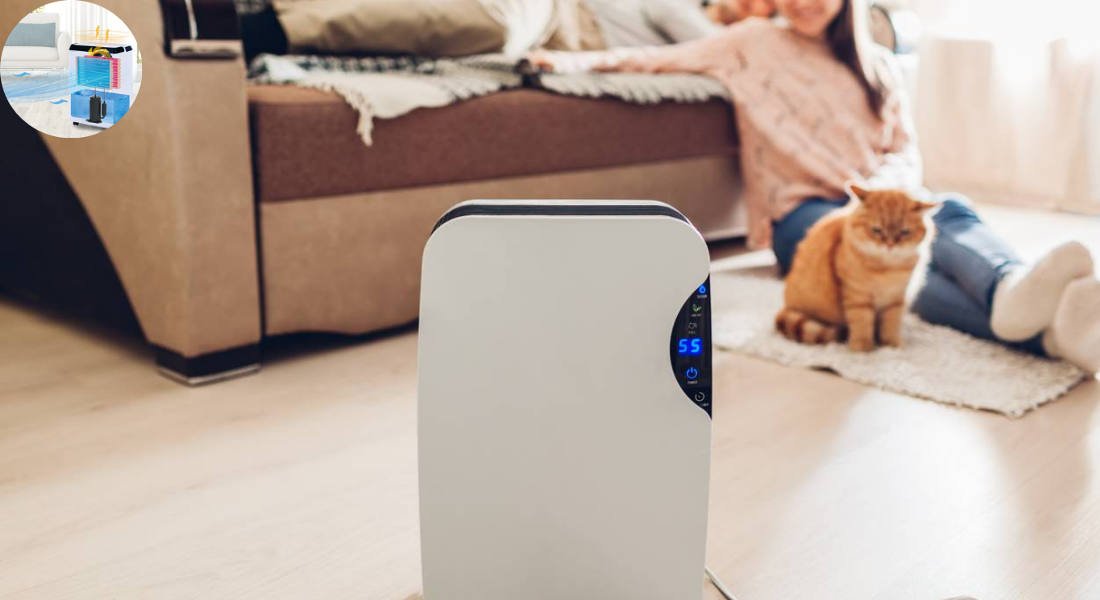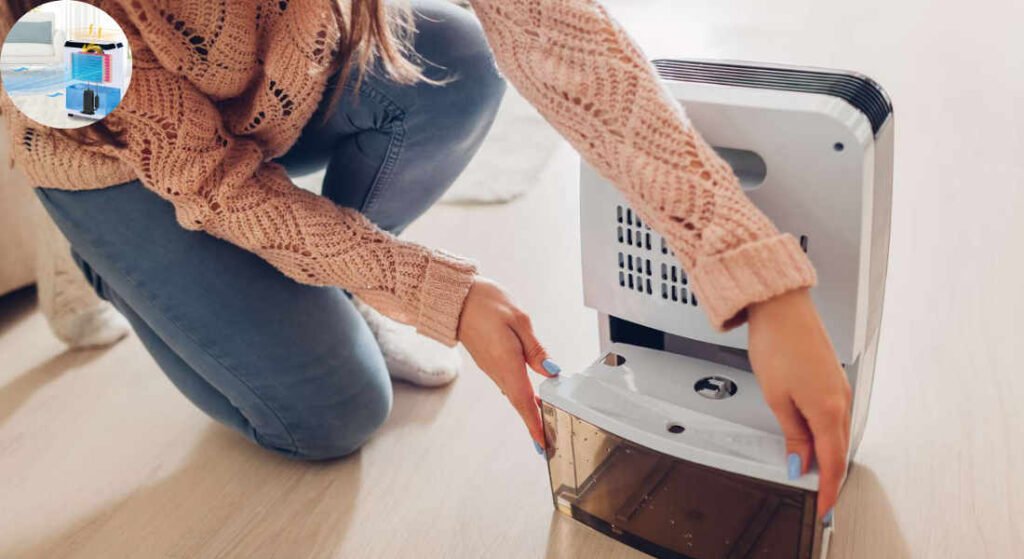Does running a dehumidifier help cool your house, or is it just a myth? While a dehumidifier doesn’t lower the temperature of a room as an air conditioner does, it can make your living space feel noticeably cooler and more comfortable by removing excess moisture from the air. High humidity makes the air feel warmer and stickier because sweat can’t evaporate as efficiently from your skin, trapping heat and leaving you feeling muggy. By lowering humidity levels, a dehumidifier helps sweat evaporate more easily, relieving that clammy sensation and creating a fresher, cooler-feeling environment—even if the actual temperature stays the same. This effect makes dehumidifiers popular for improving comfort during humid months, especially when used alongside fans or air conditioning.
What is a Dehumidifier, and How Does It Work?
A dehumidifier is a device designed to reduce humidity levels in the air. By extracting excess moisture, it creates a more comfortable living environment.
These appliances typically use a refrigeration cycle or desiccant material to remove water vapor from the air. In refrigeration, warm air passes over cold coils, causing condensation. The moisture collects in a reservoir while drier air is released into your space.
Desiccant dehumidifiers work differently using materials that directly absorb moisture from the air. They are often quieter and can function well at lower temperatures.
Both types effectively combat high humidity but serve different needs based on your home’s conditions. Whether you’re dealing with damp basements or musty closets, understanding how these devices operate helps you maximize their benefits for indoor comfort.
The Relationship Between Humidity and Temperature
Humidity and temperature are closely linked. When humidity levels rise, the air feels warmer than it is. This phenomenon occurs because moisture in the air affects our body’s ability to cool itself through sweat.
Conversely, lower humidity can make a hot day feel more bearable. With less moisture in the air, sweat evaporates more efficiently, cooling your skin.
Understanding this relationship is crucial for comfort at home. High humidity can lead to an oppressive feeling indoors, even if temperatures are moderate.
This interplay also influences energy consumption. In humid conditions, you might crank up your air conditioning to achieve comfort, leading to higher utility bills.
By managing humidity effectively with devices like dehumidifiers, you can create a cooler and more pleasant living environment without over-relying on your AC system.
You may also read (does a fireplace heat the whole house).
The Benefits of Using a Dehumidifier in Your Home
Using a dehumidifier can transform your living space. It helps maintain optimal humidity levels, making your home feel cooler and more comfortable.
Excess moisture creates an environment ripe for mold growth. A dehumidifier reduces that risk by pulling excess water from the air. This can significantly improve indoor air quality.
Wood items are less likely to warp or develop mold when kept in a drier atmosphere.
People with allergies often find relief as well; dust mites thrive in humid conditions. By controlling moisture, you reduce their population and ease allergy symptoms.
When the air feels less muggy, your cooling system doesn’t have to work as hard—this can reduce utility bills while keeping you cool during warmer months.
How to Choose the Right Dehumidifier for Your Home
Choosing the right dehumidifier starts with understanding your space. Assess the size of the area you need to dehumidify. Dehumidifiers come in various capacities, so selecting one that matches your room’s square footage is crucial.
Next, consider the humidity levels in your home. If you’re dealing with severe dampness, look for a unit designed to handle higher moisture levels efficiently.
Portability can also play a role. If you plan to move it from room to room, opt for lightweight models or those equipped with wheels for easy transport.
Energy efficiency matters, too. Look for Energy Star-certified units; they will save you money on utility bills while effectively reducing humidity.
Explore additional features like built-in humidistats and automatic shut-off functions. These can enhance convenience and ensure optimal performance tailored to your specific needs.
You may also read (does running a furnace fan actually cool your house).
Tips for Using a Dehumidifier Effectively
Place your dehumidifier in a central location to get the most out of your dehumidifier. This allows for optimal airflow and moisture removal throughout your home.
Adjust the humidity settings based on your environment. Keeping it between 30% and 50% is ideal for comfort without overly drying the air.
Regularly check and clean the filter to ensure efficient operation. A clogged filter can reduce performance significantly.
Always empty the water tank frequently, or consider a model with continuous drainage options. This will prevent overflow and maintain steady dehumidification.
Close windows and doors while running your unit. This prevents outside moisture from entering, allowing your dehumidifier to work more effectively.
Common Misconceptions About Dehumidifiers
Many people have misconceptions about dehumidifiers and their effectiveness in cooling homes. One common belief is that a dehumidifier can replace an air conditioner. While both appliances regulate indoor climate, they serve different purposes. An air conditioner cools the air by lowering its temperature, while a dehumidifier reduces humidity.
It helps create a more comfortable atmosphere by removing excess moisture from the air without significantly altering the temperature. This makes you feel cooler even when the actual temperature remains unchanged.
Some also think that all humidifiers work similarly. Still, various types are designed for specific needs—such as portable units for small spaces or whole-home systems for larger areas. Choosing one suited to your environment is crucial for maximizing its benefits.
It’s essential to understand that while a dehumidifier can contribute to a cooler feeling indoors by reducing humidity, it isn’t magic—it won’t solve extreme heat on its own. It works best alongside other cooling methods like fans or traditional AC units.
By dispelling these myths and understanding how a dehumidifier functions within your home’s ecosystem, you can make informed decisions about improving comfort and energy efficiency during those hot summer months.
You may also read (does running the dryer really heat up your house).

